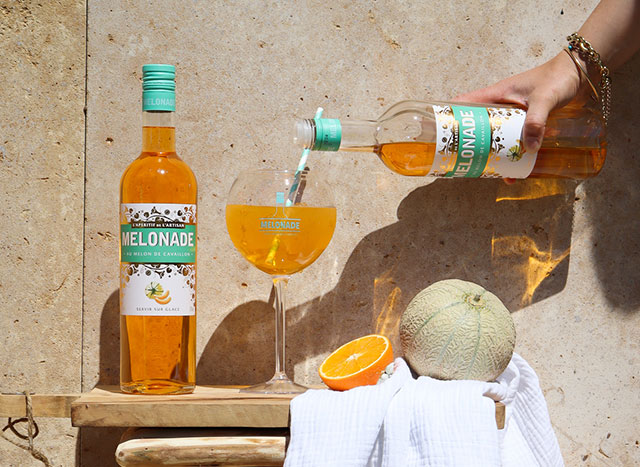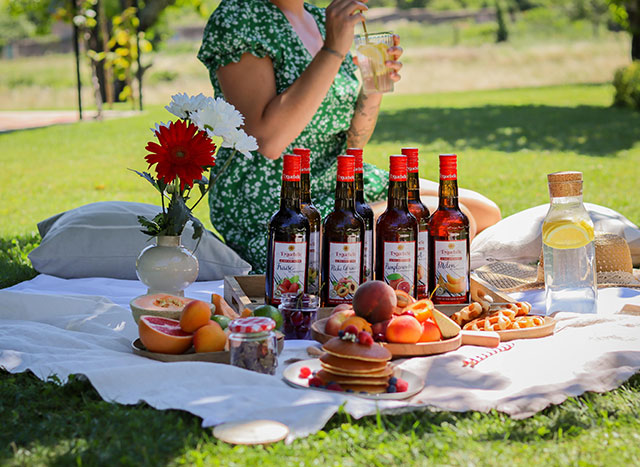
Discover 6 secrets about Pastis, the symbolic aperitif of Provence:
Its origins, its traditions, its star recipes...
Pastis is an alcoholic drink generally made from aniseed and liquorice. An aperitif symbolising summer and Provence, we've all heard of it, but do you really know the secrets of this Provençal aperitif?
Pastis: A reaction to the laws against absinthe
In 1915, absinthe-based alcoholic drinks were banned in France, along with drinks containing more than 15° alcohol. This ban was due to the controversy surrounding absinthe, which was accused of causing people to lose their minds. At the end of the 20s, Paul Ricard found an alternative to absinthe by creating an aniseed-flavoured aperitif. He named it Pastis, from the Provençal "pastisson" meaning "mixture".
A central ingredient: Star anise

Star anise, also known as Chinese star anise, is a spice introduced to Europe around the 17th century. The fruit is harvested and then dried in the sun to give it its characteristic brown colour. Thanks to its more powerful aroma than green anise, star anise is increasingly used in cooking and baking, as well as in various aniseed-based drinks such as Pastis.
Star anise is also known for its digestive properties, so it can be used as a digestive or aperitif, just like Pastis!
A tradition... but not the only one!

Pastis is generally drunk as an aperitif in 5 to 7 glasses of fresh water (an average dose is 2cl). The yellow colour of pastis is due to the use of Carmel or Reglisse colouring. Today, aniseed and liquorice are the essential ingredients in Pastis, but some brands use more complex combinations of plants and spices, such as cinnamon, fennel and cloves.
Some brands even go so far as to create blue Pastis.
In the same spirit, Ælred pastis is a blend of 44 plants, flowers, spices and alcoholates macerated and distilled by a master distiller.
Recognised as a top-quality "Pastis Provençal", it has all the freshness you'd expect from a Pastis.
A tasty Provençal stroll to discover an elegant and surprising aroma.
Why does pastis become "milky" when diluted?
Pure pastis is a coppery yellow colour. When mixed with water, its colour changes to an opaque milky cloudy yellow.
This is due to the anethole contained in star anise. Like all oils, anethole is not soluble in water, but it is soluble in alcohol (above 45%). Adding water reduces the alcohol concentration and the oil, in the form of tiny droplets, will 'float' in the drink, making it milky and cloudy.
An aperitif with many names...
In the South of France, Pastis is also called "Un jaune" (in reference to its colour).
It may also be called "pastaga" in south-east France, more specifically in Marseille.
If a pastis is "fatty", i.e. high in alcohol, it is a "yoghurt".
Finally, "Gainsbourd" refers to a double-dose pastis, in homage to the artist's favourite drink.
How to drink Pastis

Pastis is often drunk with water and ice, which is the best-known way to enjoy this Provençal aperitif! But over time, cocktails based on Pastis and syrups have also developed. Here are some original recipes to try with Pastis Ælred!
Mauresque :
Did you know? Originally, this 19th century cocktail was made with Absinthe. With the democratisation of Pastis, the latter replaced the green liqueur in the current recipe.
- 3 cl Ælred Pastis
- 1 cl Eyguebelle Orgeat Syrup
- 10 cl water
- Ice cubes
Perroquet :
- 3 cl Ælred Pastis
- 1 cl Eyguebelle Mint Syrup
- 10 cl water
- Ice cubes
Tomate :
- 3 clÆlred Pastis
- 1 cl Eyguebelle Grenadine Syrup
- 10 cl water
- Ice cubes
Enjoy on its own, or with friends as an aperitif!
















